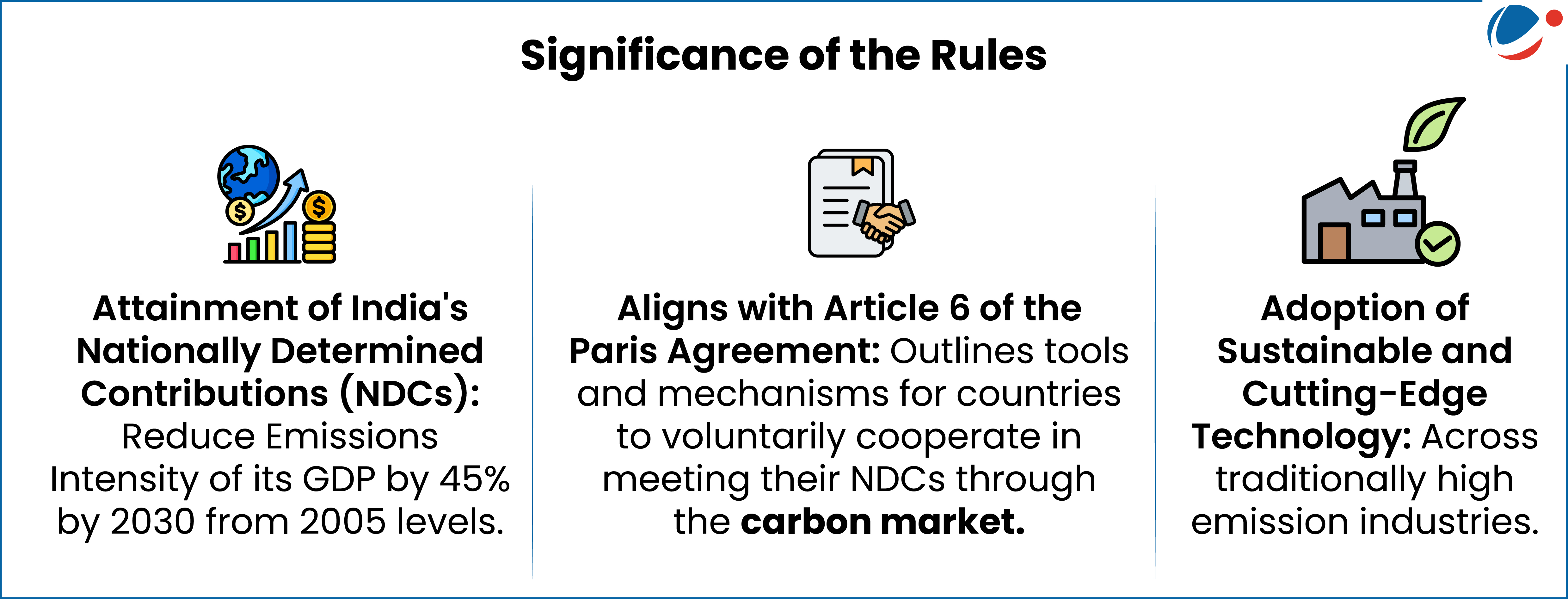Rules set GEI Targets for four energy-intensive sectors (aluminium, cement, chlor-alkali, and pulp & paper) ensuring emission cuts.
- GEI means Greenhouse Gases Emission Intensity in tCO2e/equivalent output or product.
Key Highlights of the Rules
- GEI Targets Calculation: As per Bureau of Energy Efficiency's methodology, specific to each obligated entity as listed in the Schedule.
- Compliance Requirements for Obligated Entities: They must meet GEI targets annually as per the Carbon Credit Trading Scheme, 2023 (see box).
- May also purchase carbon credit certificates from the Indian Carbon Market (ICM) to offset shortfalls.
- Environmental Compensation: To be imposed by the Central Pollution Control Board (CPCB), equal to twice of the average price at which carbon credit certificate is traded in the compliance year, payable within 90 days.
- Legal Backing: Non-compliance or rule violations is addressed under the Environmental Protection Act, 1986.

About Carbon Credit Trading Scheme, 2023.
|




